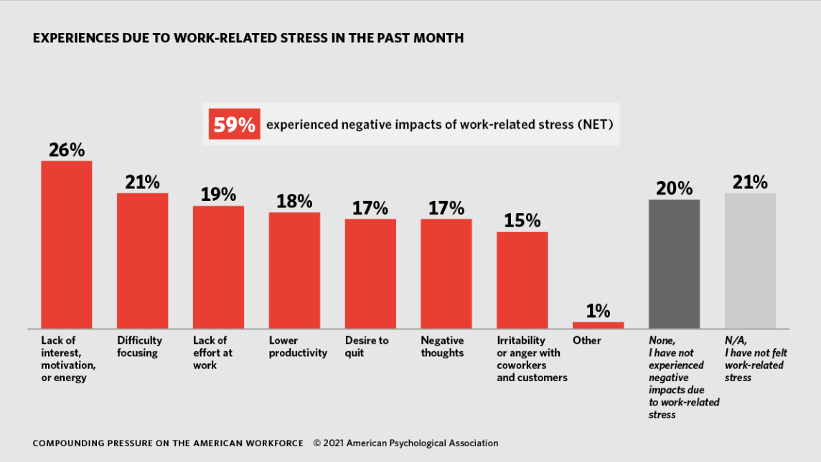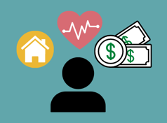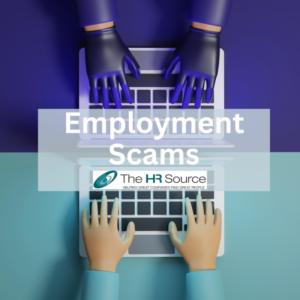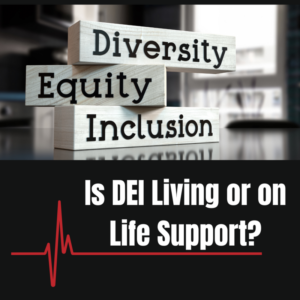Finding A Path to Mental Wellness In The Workplace
It’s been called a second pandemic. Mental health issues have created a parallel crisis to THE Pandemic but there is no vaccine and no booster. May is mental health awareness month and a time to examine how COVID has aggravated burnout, stress and our overall sense of well being.
Let’s Set The Stage: What is Burnout?
The World Health Organization describes burnout as a syndrome resulting from chronic workplace stress that has not been successfully managed. The word “workplace” indicates that burnout is an occupational syndrome, not a medical condition that requires an organizational solution. Specifying that it is a stress that has not been successfully managed implies that it is a stress that could be prevented. Left unaddressed burnout can easily lead to medical conditions such as anxiety and depression. The unprecedented challenges of the pandemic brought high levels of productivity but as time wore on the costs became clear. High productivity masked extreme exhaustion and stress leading to burnout.
What Are The Stats?
Mind Share Partners’ 2021 Mental Health at Work Report found that prevalence of mental health challenges among employees increased from 2019 to 2021 and that younger and historically underrepresented workers struggle the most. Millennials and Gen Zers, as well as LGBTQ+, women, Black, and Latinx workers were all significantly more likely to experience mental health symptoms. They are also as much as 30% more likely to consider leaving their jobs for mental health issues. In this study, 76% of full-time U.S. employees reported at least one symptom of a mental health condition in the past year—a 29% increase from 2019 (59%). The top three most commonly reported symptoms were burnout (56%), depression (46%) and anxiety (40%).
What Are The Sources and the Impacts of Burnout?
It’s important to note that workplace burnout is not new. In the years leading up to the pandemic, workers in sectors such as technology and consulting notoriously carried burdensome workloads. In 2020, stress levels increased as we learned to live and work within the confines of mandates and precautions. By 2021, employees characterized work as emotionally draining. Managing long hours and increased work loads had taken a toll. Work-life balance for many became a struggle. Now in 2022, returning to work and associated employer requirements are an additional source of stress as employees work to preserve a level of flexibility that represents the higher value now placed on work-life balance. Lastly, non-supportiveI work cultures are a particular source of stress, especially for Black, LatinX, LGBTQ+ or other underrepresented workers. In our Fall 2021 Return-to-Work Blog Series, The HR Source discussed how employees reprioritized work/life goals which manifested as The Great Resignation. Mental health issues are surfacing as key in this new value equation.
Recognizing the impact of mental health on the workforce is as important as understanding the sources. Burnout can manifest as absenteeism, attrition or reduced productivity. According to the Mind Share Partners’ 2021 Mental Health at Work Report, in 2021, 50% of respondents reported having left a previous role due at least in part to mental health concerns.


Where Do We Go From Here?
Employers must move from treating mental health as an individual challenge to a collective priority. Supporting people and their mental health by redesigning workplace culture is a win for individuals and the organization. Workers who felt supported with their mental health were 26% less likely to experience mental health symptoms, underperform and miss work. They also reported higher job satisfaction, intentions to stay at their company and had more positive views of their company and its leaders.
What can organizations do? Among other things, consideration should be taken to:





Employees today are not the same as those that went home from their organizations two years ago. Employers seeking to attract and retain top talent must recognize that the majority of job candidates look for companies with cultures that support mental health. When organizations address burnout by establishing countermeasures, they create new healthier workplaces where people thrive.




